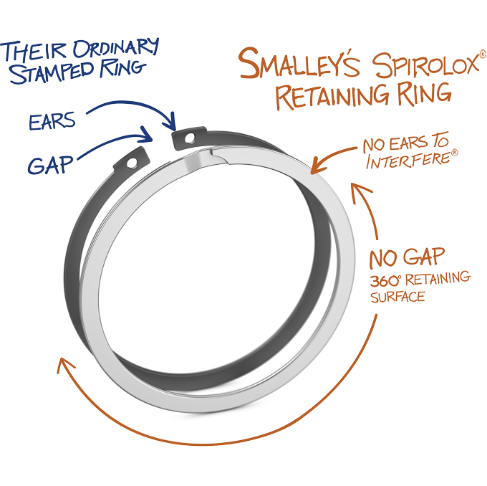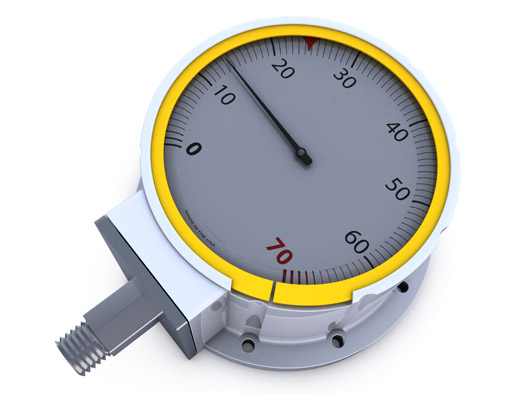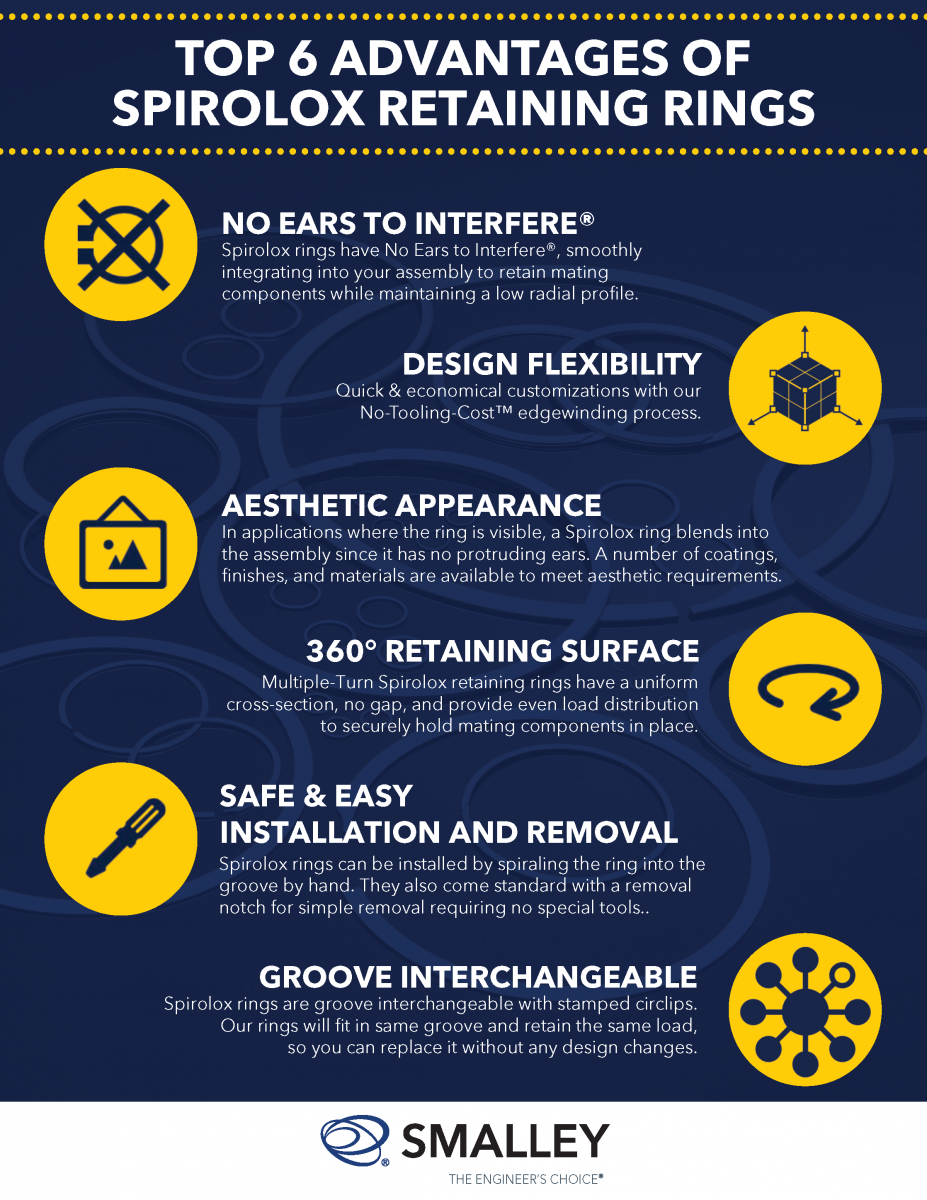Smalley Spirolox® Retaining Ring vs. Stamped Circlip/Snap Ring

While there are a variety of retaining rings available in the industry, engineers specify Spirolox retaining rings, because of their unique configuration, reliability, and convenience. This blog compares a traditional snap ring to a Smalley Spirolox retaining ring, as there are notable differences between them.
What makes a Smalley Spirolox® retaining ring different, and what is the advantage of using one?
1. Spirolox® retaining rings are coiled, not stamped, providing greater design flexibility.
All Spirolox retaining rings are coiled using our unique edgewinding process. Edgewinding has been our trusted manufacturing process for over 50 years, providing precise yet flexible solutions to meet your retaining ring needs. Round wire is first processed through our in-house rolling mill to a flat state. Then it is coiled on edge to form the ring. Edgewinding provides us the flexibility to have 6,000 standard parts broken up into 30 configurations.
Coiling our rings does not require dedicated punch and die tooling, which are necessary for traditional stamped circlip manufacturing. This flexibility to modify part diameters without tooling replacement allows for improved confidence that our Smalley engineers can tailor a ring to meet even the most stringent application constraints.
What this means for you is quick, easy, and economical customization at any stage of the development process. If one of our standard rings does not meet your application requirements, a custom ring can be made with No-Tooling-Costs™.
Additionally, only the required flat wire material is coiled during edgewinding, which virtually eliminates all material waste. When a stamped retaining or snap ring is made, it is stamped from a piece of metal sheet, which in turn creates scrap from both inside and outside of the ring. In cases where a large diameter or an exotic material is required, the scrap cost increases drastically.
2. No Ears to Interfere® with undesired components
Due to the edgewinding process, the Spirolox retaining ring’s main advantage is in its unique configuration. Traditional circlips have “ears”, also referred to as lugs. The ears take up additional radial space, which may cause an undesired interference with other components. Spirolox rings have No Ears to Interfere®, smoothly integrating into your assembly to retain mating components while maintaining a low radial profile.
3. Improved Aesthetic Appearance

4. 360° Retaining Surface
Unlike traditional circlips, Spirolox Multiple-Turn rings have a uniform cross-section and no gap. Having a 360° retaining surface, Multiple-Turn Spirolox retaining rings provide even load distribution to securely hold mating components in place.
5. Groove Interchangeable
Not only do Spirolox rings meet various quality of part requirements, but they’re also groove interchangeable with stamped circlips. What this means is that a Spirolox retaining ring will fit in the same groove and retain the same load as its corresponding circlip. If you’re currently using a circlip, check out our Interchange Listing Table to see what Spirolox part can replace it, all without any design changes.
6. Safe and Easy Installation and Removal
Spirolox retaining rings are safer and easier to install and remove in comparison to circlips. The typical installation process for circlips involves snap ring pliers. Snap ring pliers are inserted into the ears of the circlip, and the ring is then stretched over a shaft or compressed into a housing. During installation and removal of a larger sized circlip, the risk of the ring flying off the pliers poses a safety hazard.
In contrast, Spirolox rings can be installed by spiraling the ring into the groove by hand. This gives the operator more control of the ring, posing less of a safety risk. They also come standard with a removal notch for simple removal requiring no special tools. Any flat-blade tool, such as a screwdriver or staple remover, can be used to spiral the ring up and out of the groove.
How To Install and Remove an External Spirolox Retaining Ring:
How To Install and Remove an Internal Spirolox Retaining Ring:
Get Started:
Now that you understand the differences between a Smalley Spirolox retaining ring and a traditional stamped circlip, get started with a Smalley engineer today and add a Spirolox to your design toolkit.
We also provide Free Samples on all of our standard rings so that you can see the Spirolox advantage in your own application.
Interested in learning more?
We've put together a FAQ Retaining Ring E-Book for you.
Summary Infographic




Connect With Us